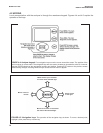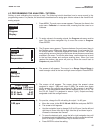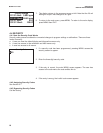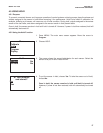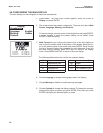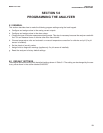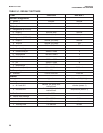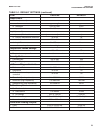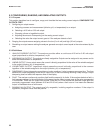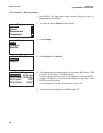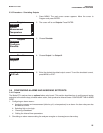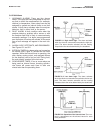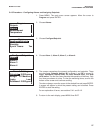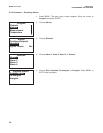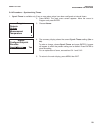
22
MODEL FCL-1056 SECTION 5.0
PROGRAMMING THE ANALYZER
5.3 CONFIGURING, RANGING, AND SIMULATING OUTPUTS.
5.3.1 Purpose
This section describes how to configure, range, and simulate the two analog current outputs. CONFIGURE THE
OUTPUTS FIRST.
1. Configuring an output means…
a. Assigning a sensor and measurement (chlorine, pH, or temperature) to an output.
b. Selecting a 4-20 mA or 0-20 mA output.
c. Choosing a linear or logarithmic output.
d. Adjusting the amount of dampening on the analog current output.
e. Selecting the value the output current goes to if the analyzer detects a fault.
2. Ranging the outputs means assigning values to the low (0 or 4 mA) and high (20 mA) outputs.
3. Simulating an output means making the analyzer generate an output current equal to the value entered by the
user.
5.3.2 Definitions
1. ANALOG CURRENT OUTPUT. The analyzer provides either a continuous 4-20 mA or 0-20 mA output
signal proportional to chlorine, temperature, or pH.
2. ASSIGNING AN OUTPUT. The outputs are freely assignable. Outputs can be assigned to any sensor and to
either the measurement or temperature.
3. LINEAR OUTPUT. Linear output means the current is directly proportional to the value of the variable assigned
to the output (chlorine, pH, or temperature).
4. LOGARITHMIC OUTPUT. Logarithmic output means the current is directly proportional to the common
logarithm of the variable assigned to the output (chlorine, pH, or temperature).
5. DAMPENING. Output dampening smoothes out noisy readings. It also increases response time. The time
selected for output dampening is the time to reach 63% of the final reading following a step change. Output
dampening does not affect the response time of the display.
6. FAULT. The analyzer continuously monitors itself and the sensor(s) for faults. If the analyzer detects a fault, a
fault message appears in the main display. At the same time the output current goes to the value programmed
in this section. There are two output fault modes: fixed and live. Fixed means the selected output goes the
previously programmed value (between 0.00 and 22.00 mA) when a fault occurs. Live means the selected
output is unaffected when a fault occurs.
7. RANGING AN OUTPUT. The outputs are fully rangeable, including negative numbers. If the output is
logarithmic, assigned values must be positive.



